February #9: We are so back!

Winter has counted its days! We just experienced extreme frost this week, and nothing can stop me from planting everything!
I have so many plans for this season! I got into the welding trade! I am trying to learn a new skill and finally repair some annoying stuff in my garden, including the main entrance—but that’s another day! Because I suck at it. We are still in February, and that’s a month for preparations! So let’s prepare the garden.
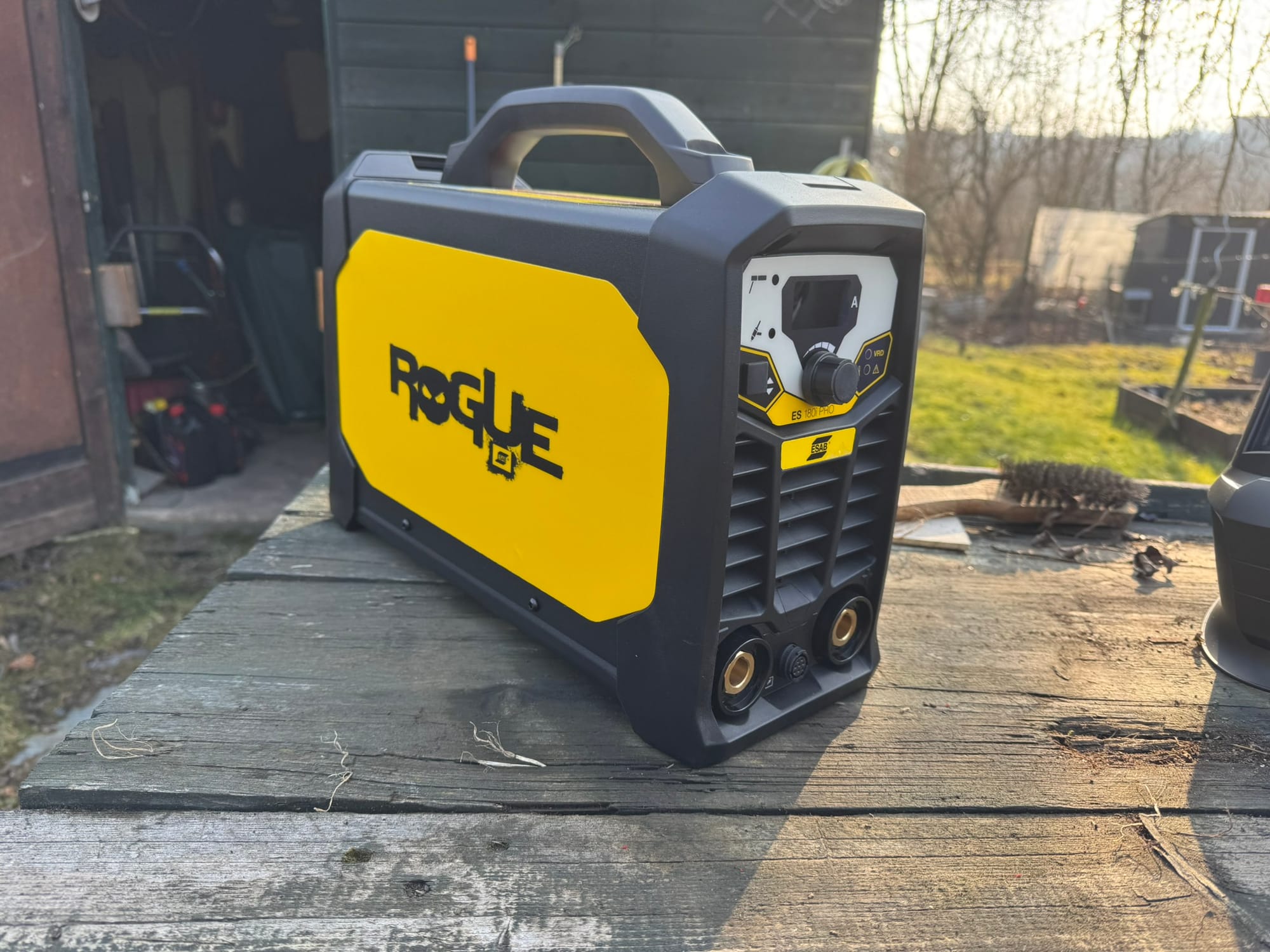
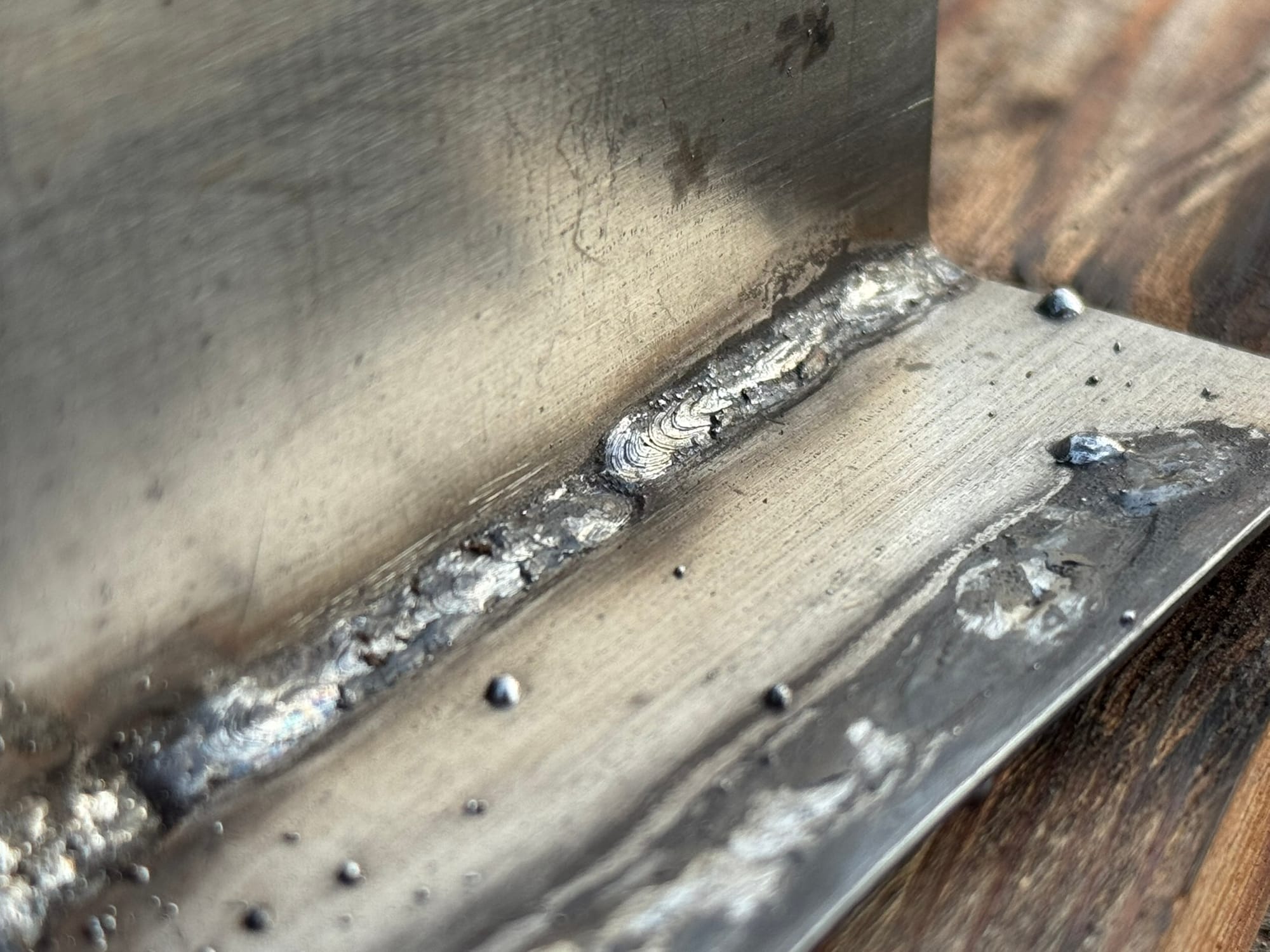
Yes, that's galvanized steel. Yes, got myself a welder's fever after that.
the cleansing
As in any other year, the greenhouse is full of trash. Not literal trash—though some greenhouses are full of that—but mine is mostly full of organic trash. I’m talking about various fungi and pathogens that could be left in the soil, just waiting for the opportune moment to ravage my plants. So it’s necessary to clean it. I do this by applying a hefty amount of calcium cyanamide to the soil and burning sulfur knots to clean the air.
Of course, I managed to poison myself again with some sulfur gas.

I also spotted a few molehills—not many, but enough to cause some mild concern. Don’t get me wrong; I usually have no issue with moles and molehills. In the end, they help aerate the soil and bring fresh soil to the top, which is great for the grass. But they also carry some rocks along with the soil, which can cause problems for my lawnmower.
the defiance
Unfortunately, at this time, there is actually very little to do in the garden. The weather is still shit by my standards, and all you can do is wait for the cold to pass. But that doesn’t mean I’m going to sit still. Hell no! I’m totally going to beat the winter—WITH HEAT!
At least, that’s what I thought.
I want to grow some plants in March that I should definitely not be growing in March—like cucumbers! Cucumbers are extremely intolerant to frost and hate cold temperatures. That means I need to figure out how to heat the greenhouse. But since I’ll only need heating for about eight weeks, I don’t want to install any permanent system, as it would just sit unused for the rest of the season.
One solution I thought would be enough was the trusty candle pot heater. You place a candle under a clay pot, which captures the heat and releases it slowly—otherwise, the heat from the candle would just rise and escape.
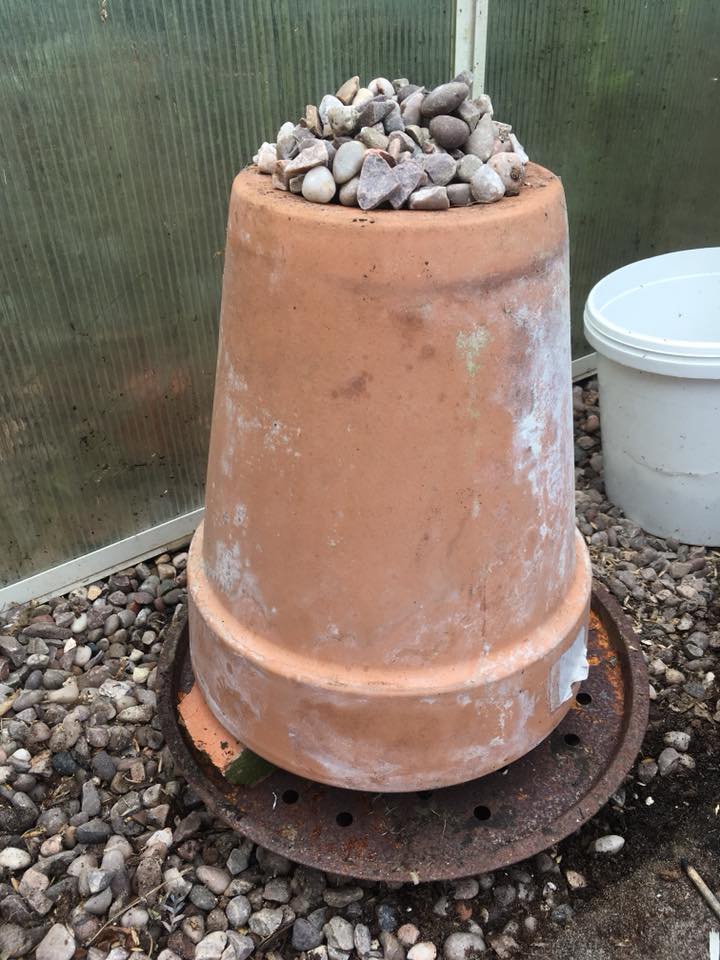
But I was a bit afraid of leaving a candle under a clay pot unattended, so I decided to build a different device: a bucket full of sand, some copper pipes to transfer heat into the sand, and a stone brick on top of some metal sheets that also help distribute the heat.
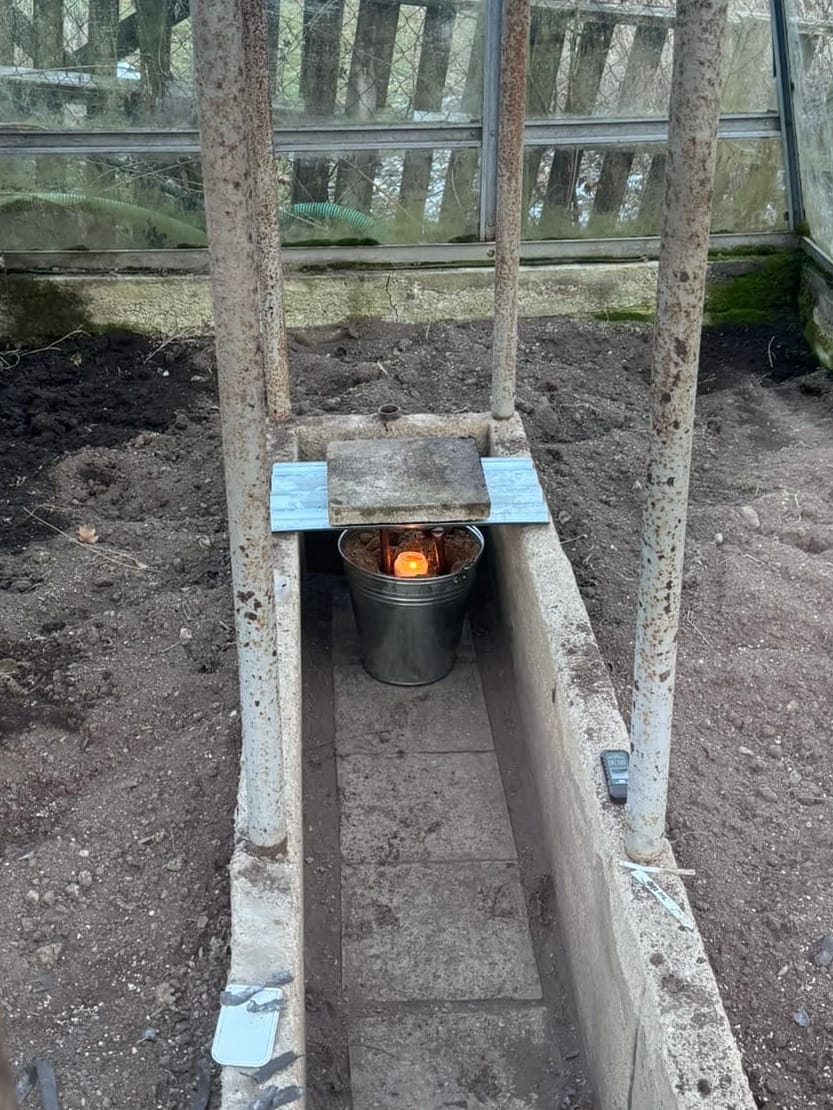
This worked great—in theory! After staying in the greenhouse for a while, I felt like the air was getting warmer, but my own body heat was definitely contributing to that. I placed a temperature recorder in the greenhouse overnight and waited to test it properly. When I returned the following day, I found out two things.
The first one was obvious—the candle almost started a greenhouse fire.
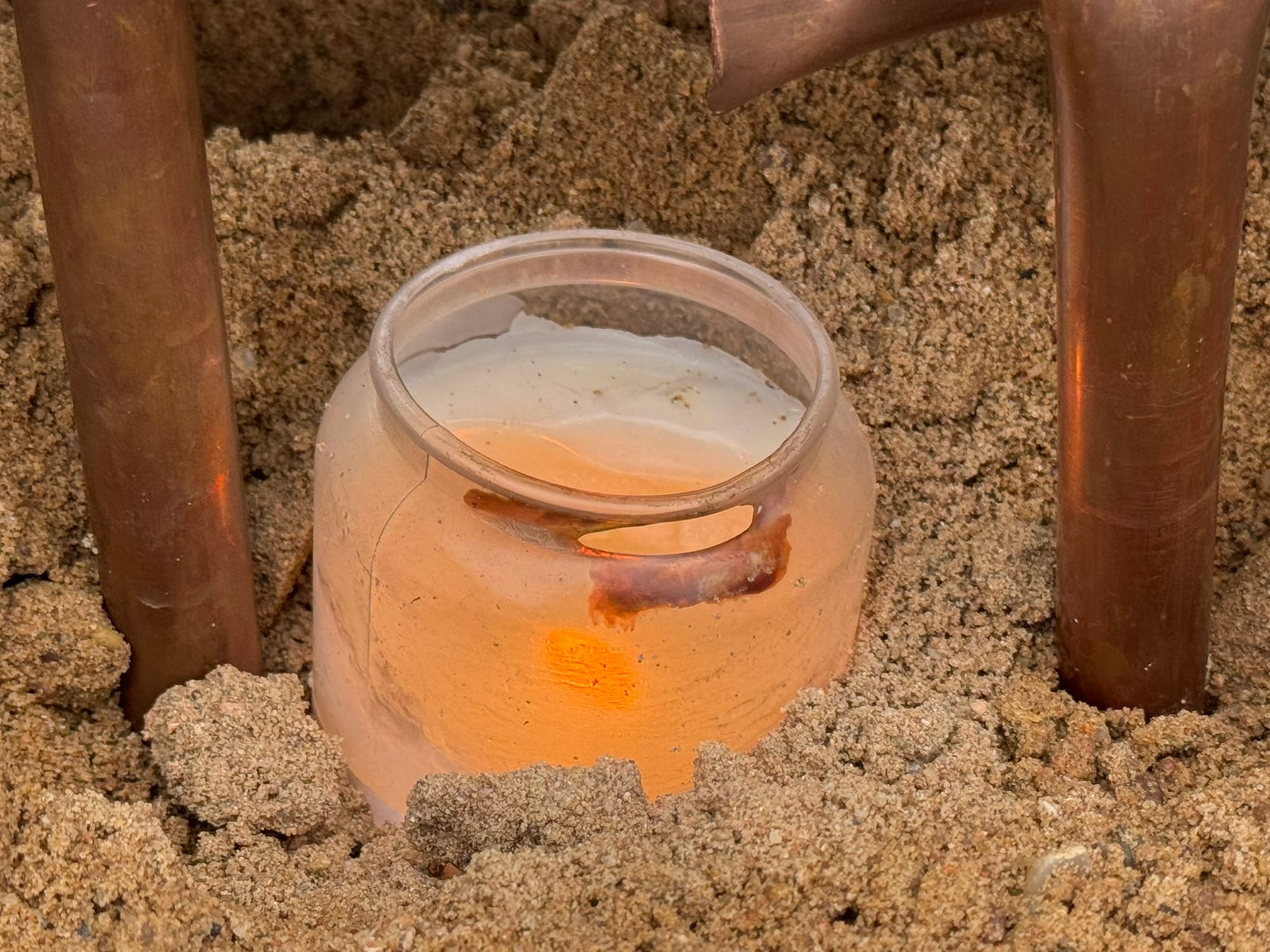
The second was that the temperature had dipped well below zero. Okay, maybe not well below—it dropped to -1.3°C, which is definitely not a cucumber-friendly temperature.
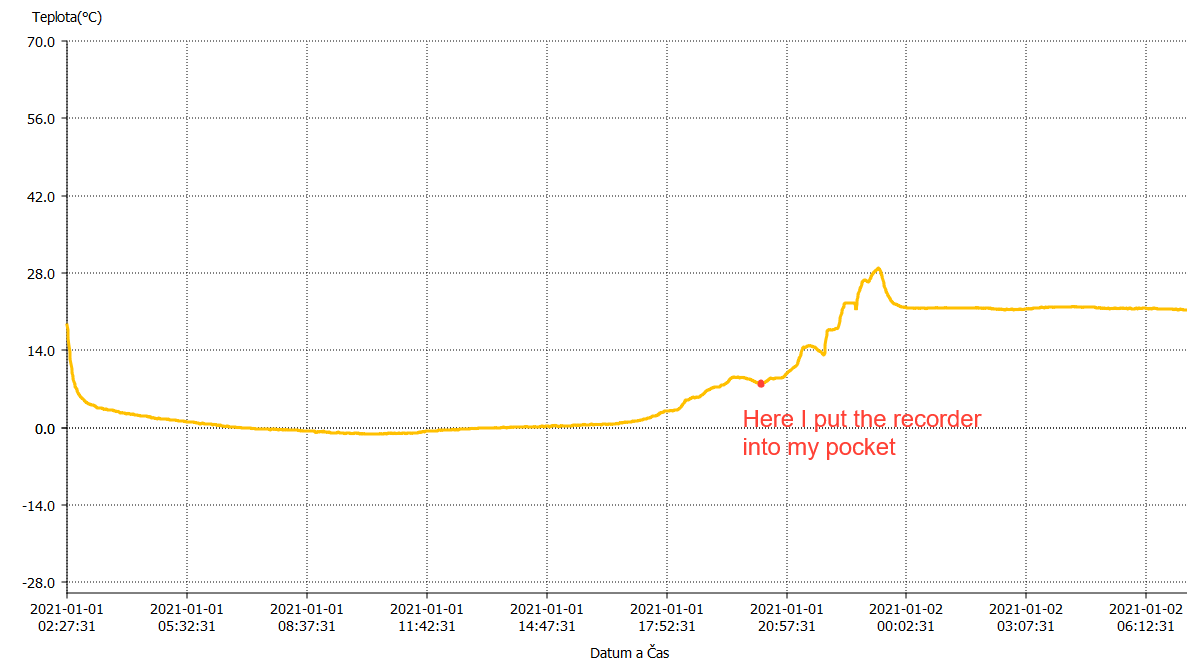
But there’s still hope!
Another common technique for keeping a greenhouse above freezing is placing a large barrel of water near the plants. During the day, the barrel absorbs heat and releases it at night. It’s not a massive amount of heat, but it should be enough to keep the plants comfortable. Water has excellent thermal conductivity and good thermal mass, and its densest point is just above freezing, so as long as there’s some residual heat, the water remains liquid.
And I could help even more! I bought small plastic greenhouses to cover the plants, and since there will be a large barrel of water next to them, I also hooked up an irrigation spike to keep the soil moist.

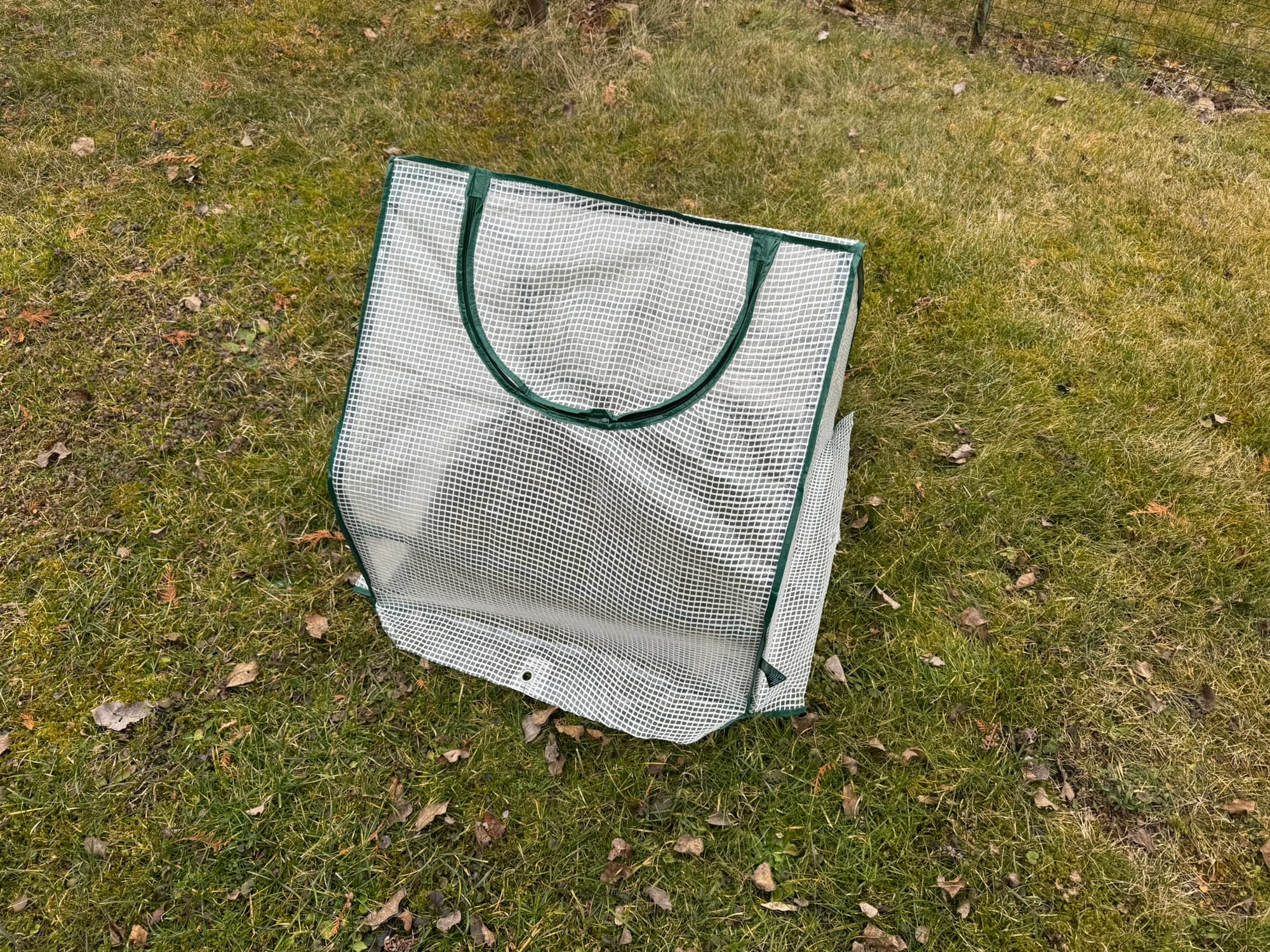
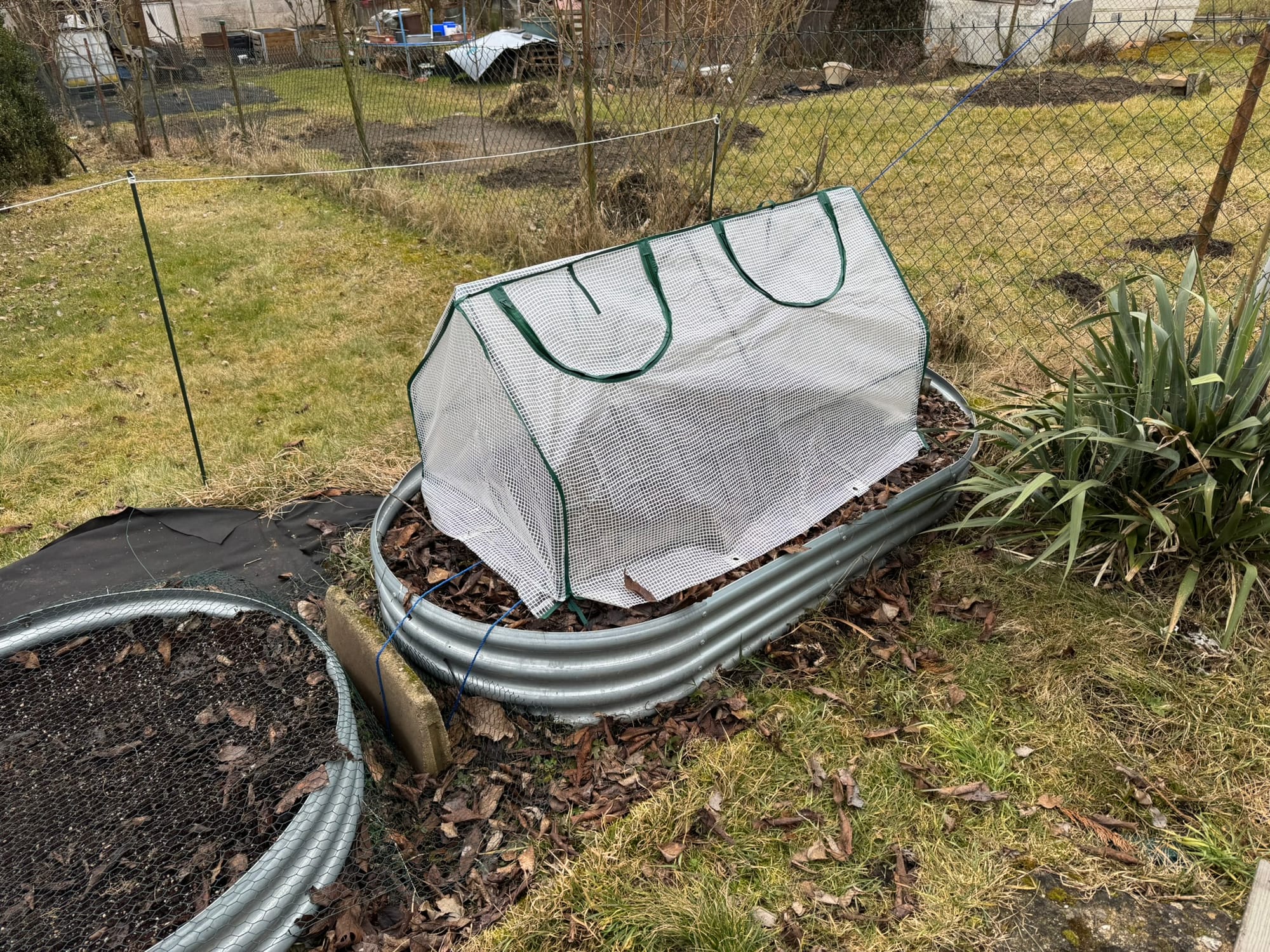
There are two variants of these small greenhouses. The large could be used on one of my raised beds.
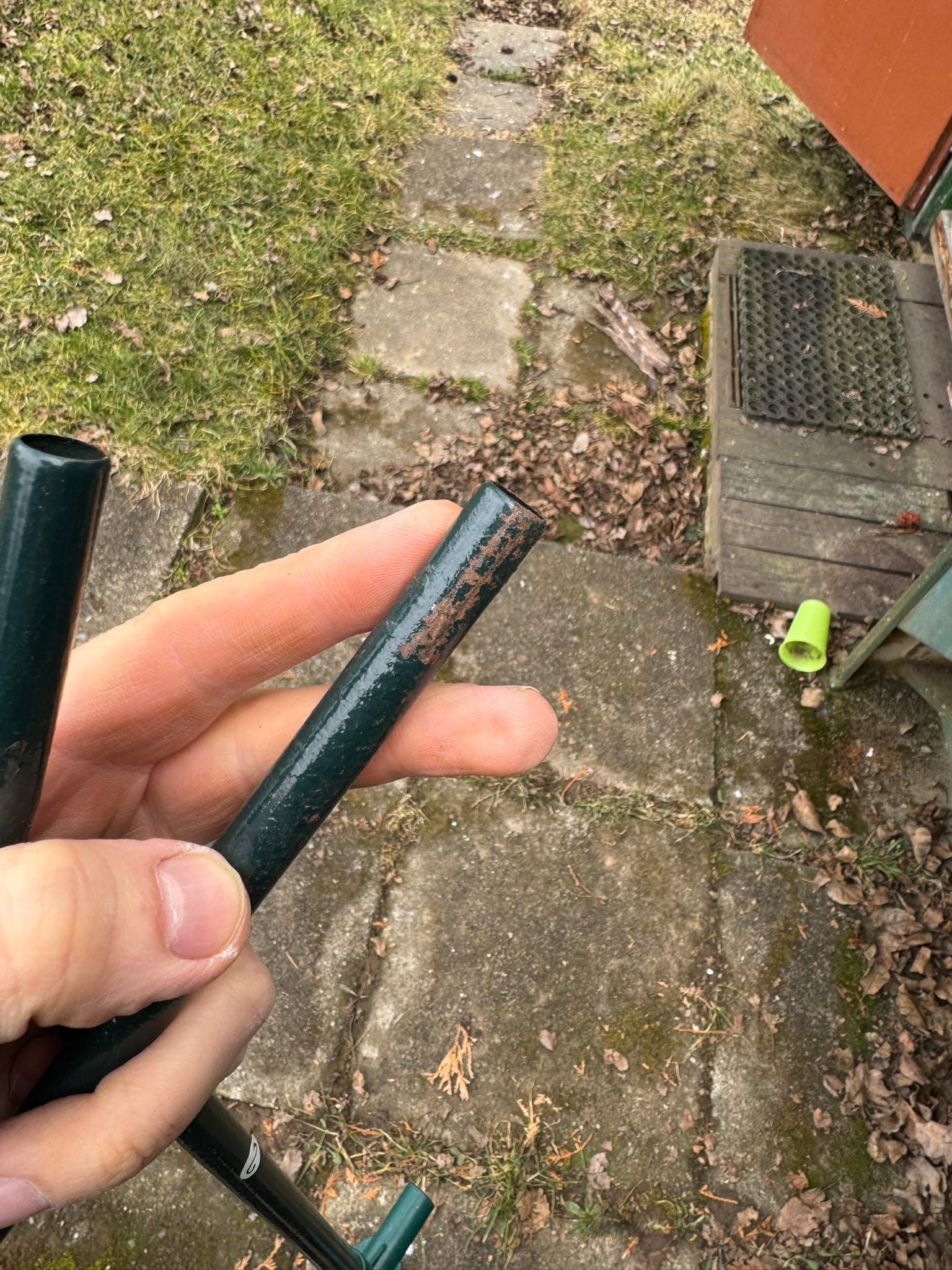
I don’t want to kill my cucumber seedlings, but I am happy to kill my kohlrabi seedlings—for science, of course! Let’s see how this experiment turns out. The weather should get really cozy in the first half of March, so I might actually remove the tiny greenhouse from them since Kohlrabi doesn’t like too much heat.
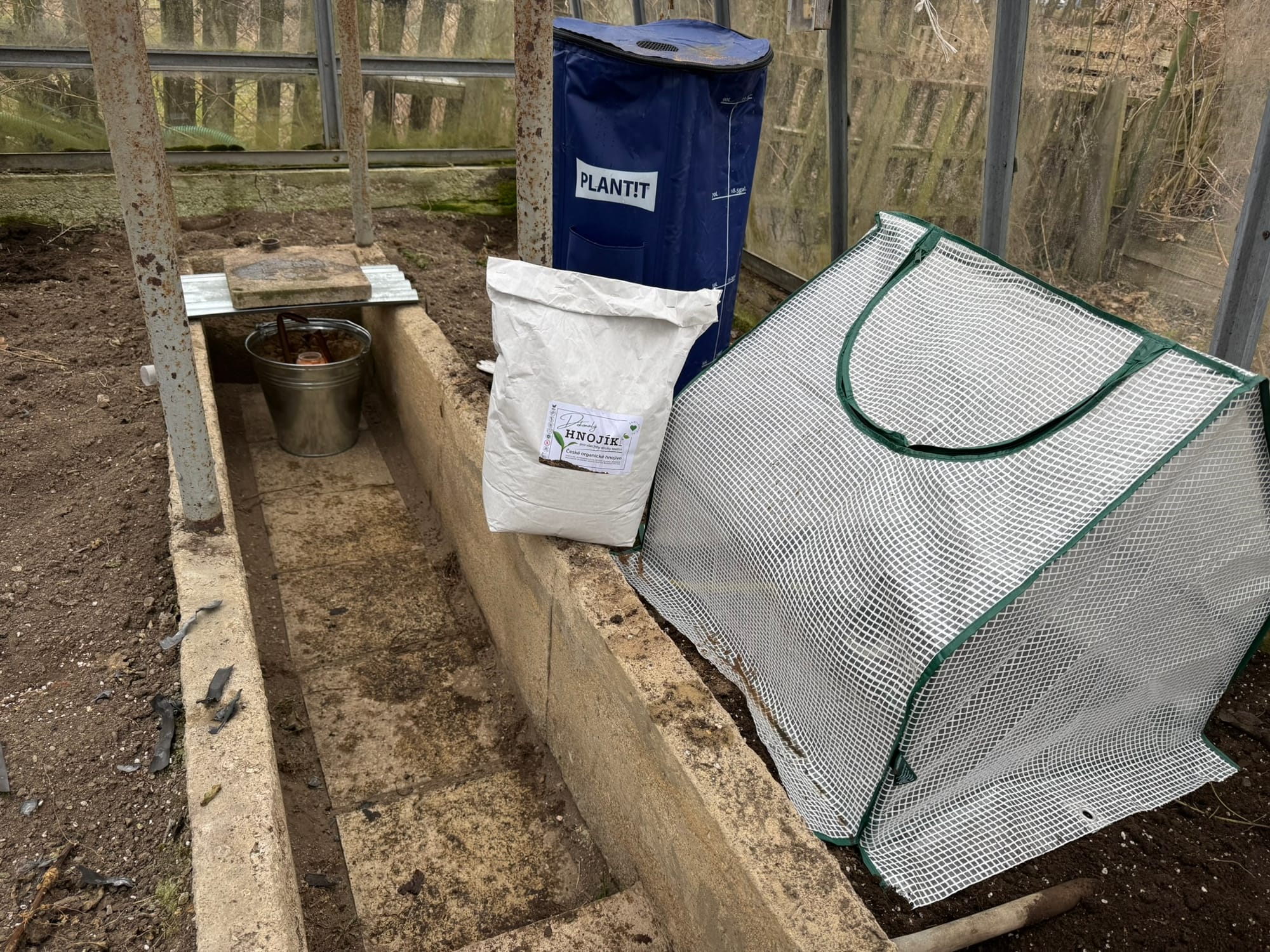
the insider information
This season, I plan to grow more of everything. More peppers, more cucumbers, more potatoes, more tomatoes—more everything! I’ve designated spaces for new raised beds and more grow bags. I also plan to grow something I never thought was even possible here before—a banana plant!

I have a dying bush that I don’t plan to save, and a nice, large plant in its place would be great. I discovered some banana varieties that can produce fruit in just eight months and are somewhat cold-hardy. That doesn’t mean I can leave them outside during the winter, but since the plant dies back every year, I just need to protect the tiny little offshoots. I’m really excited to see how terribly this is going to turn out! I have no real hopes for fruit—just for decorative purposes.
Now, for the peppers.


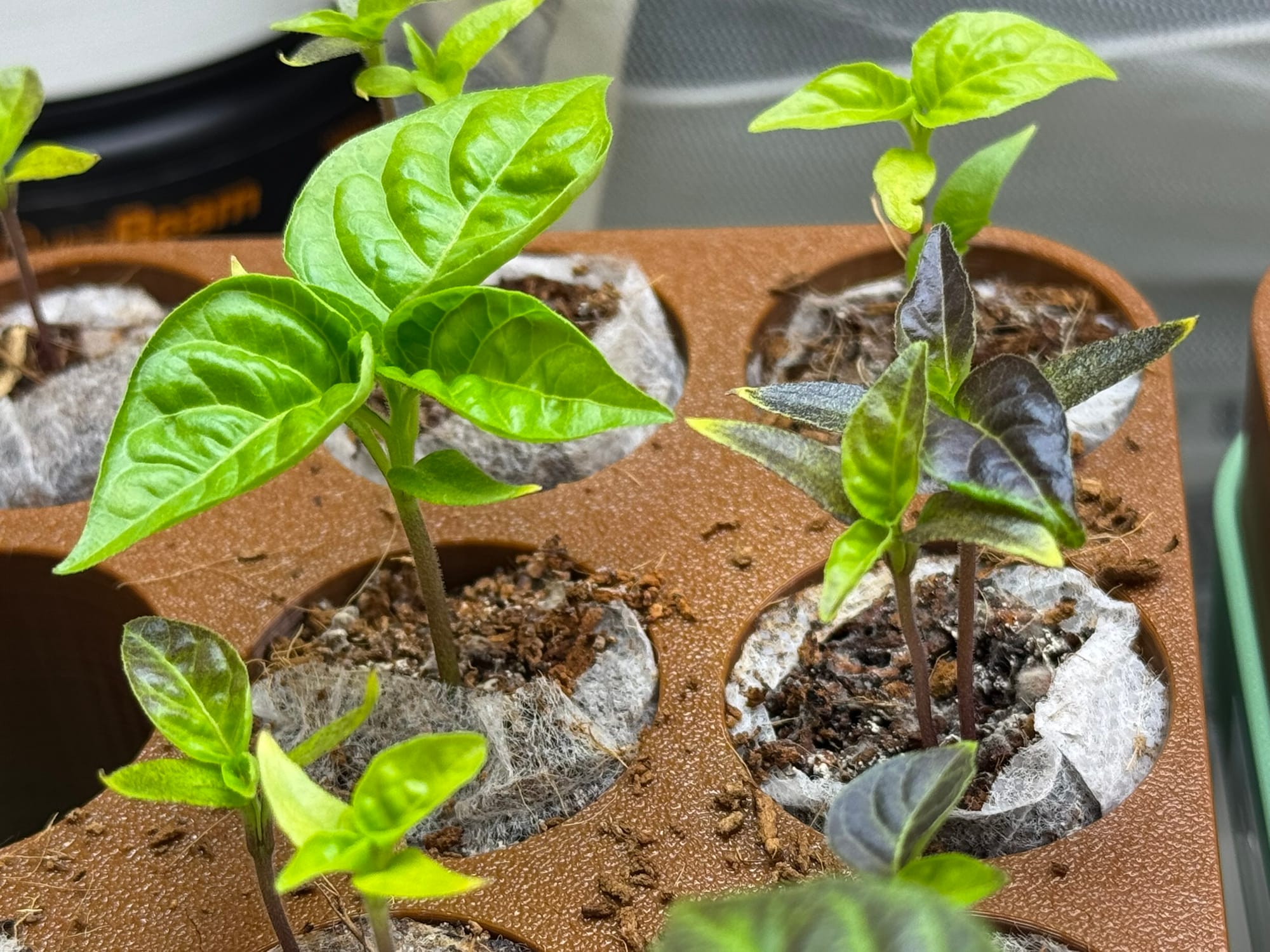
This year, I decided to scale down my super-hot chilies to just a few plants of my favorite Habanero Bonda Ma Jacques in favor of other varieties. Since I don’t plan to grow cucumbers in the greenhouse during the main season, I want to put more peppers there instead. That means I’m going to need about 10 more plants than usual. Well, let’s just round it up and make it 24.
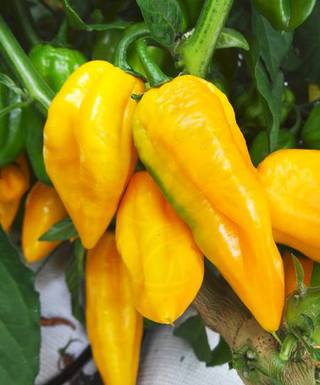
So far, I have at least 50 pepper seedlings, but let’s assume up to 15 won’t make it to the greenhouse. That should be just enough for the space.
This year, I’m growing sweet bell peppers (Meika and Bajka varieties), Habanero Bonda Ma Jacques, and Jalapeños Jalastar.
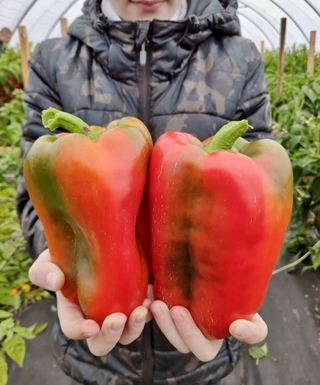
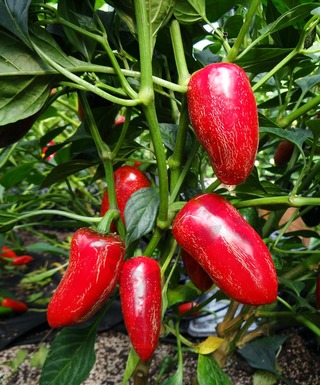
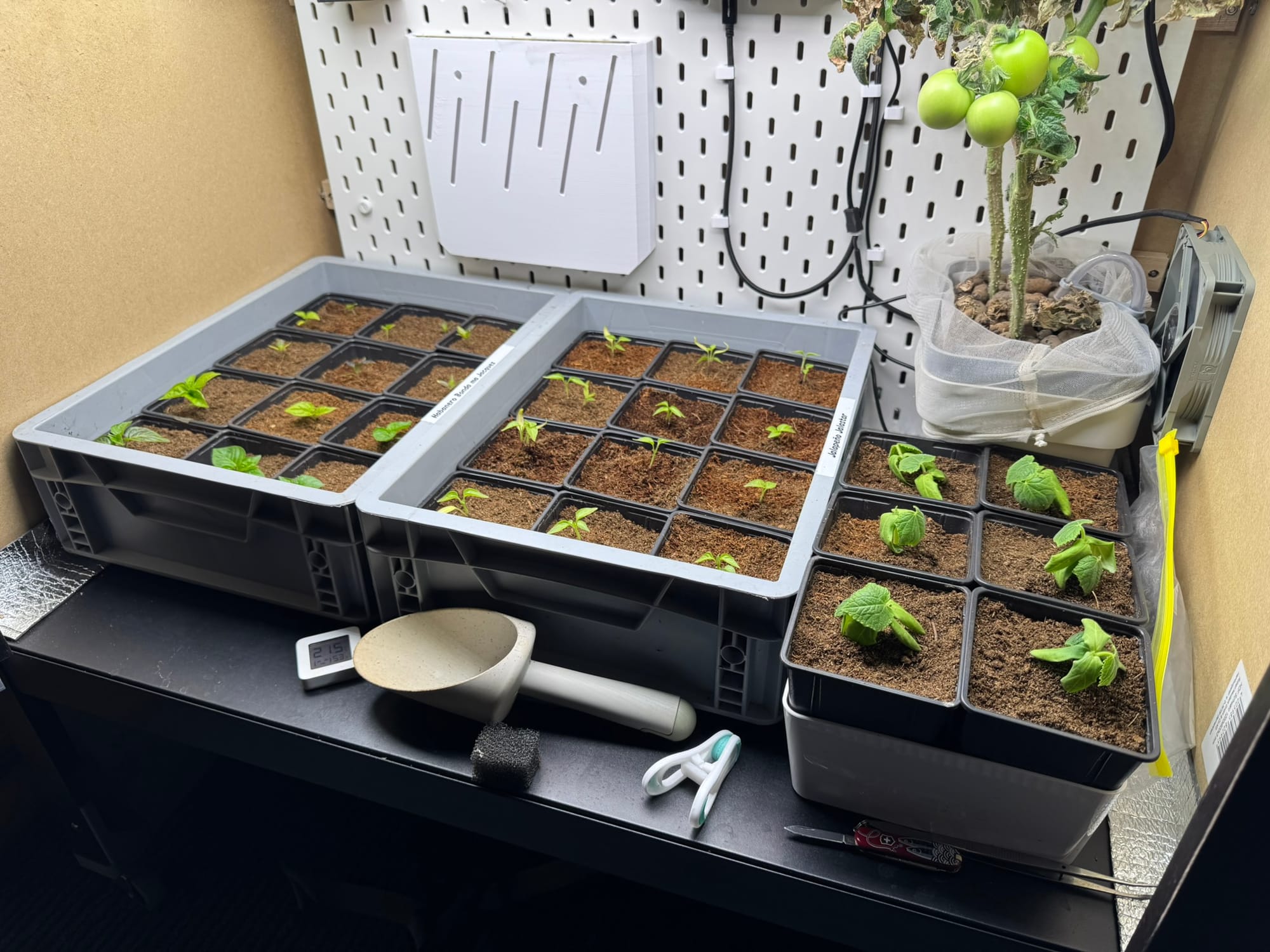
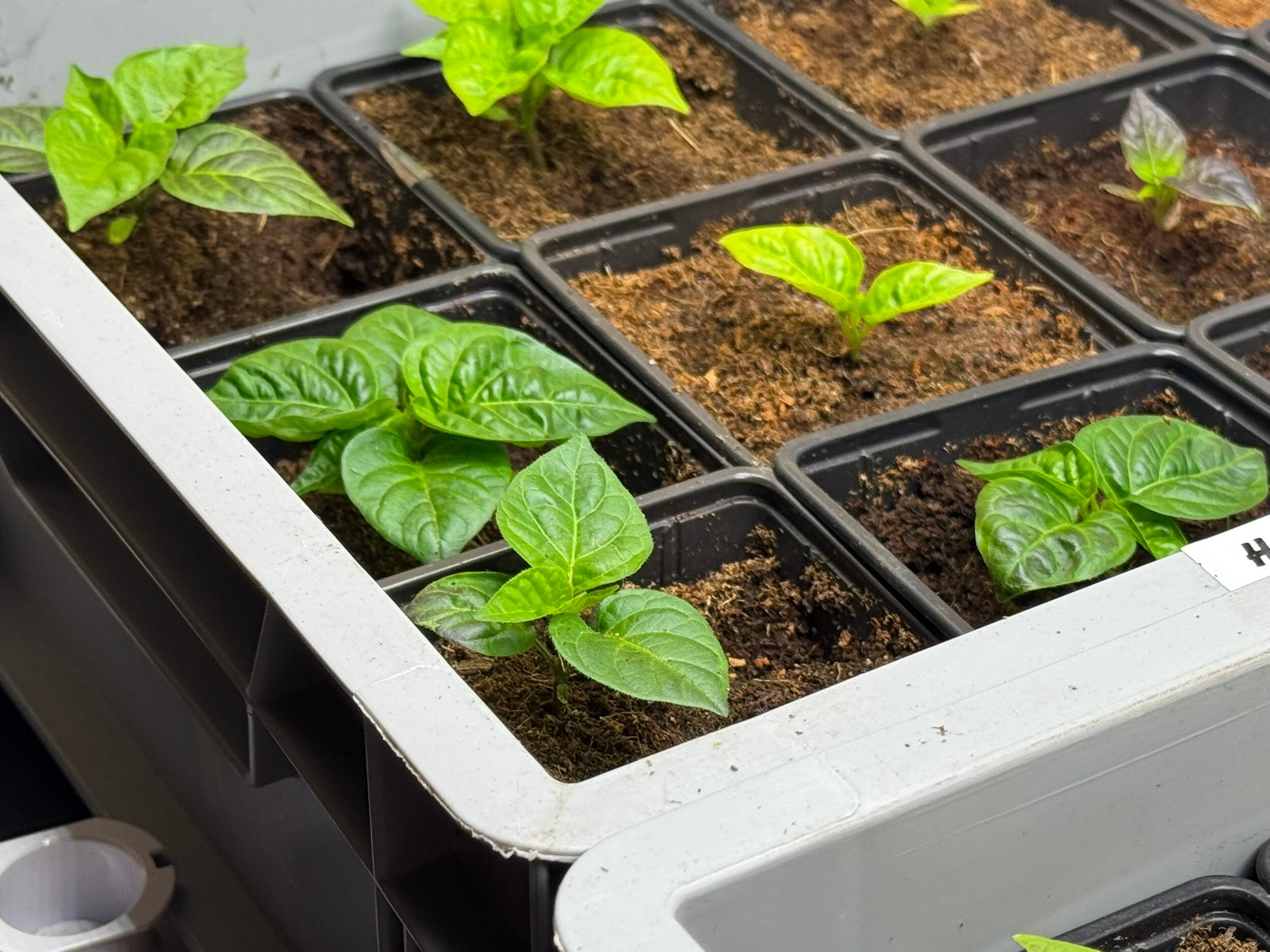

Since I’m expanding my crops, I’m also trying a new organic fertilizer this year—Hnojík. It’s gaining some popularity and hype around here, and while I’m not a fan of hype trains, the name is just too catchy, and the reviews are pretty good. So, I decided to give it a try. This is not an ad! I just really like the name.
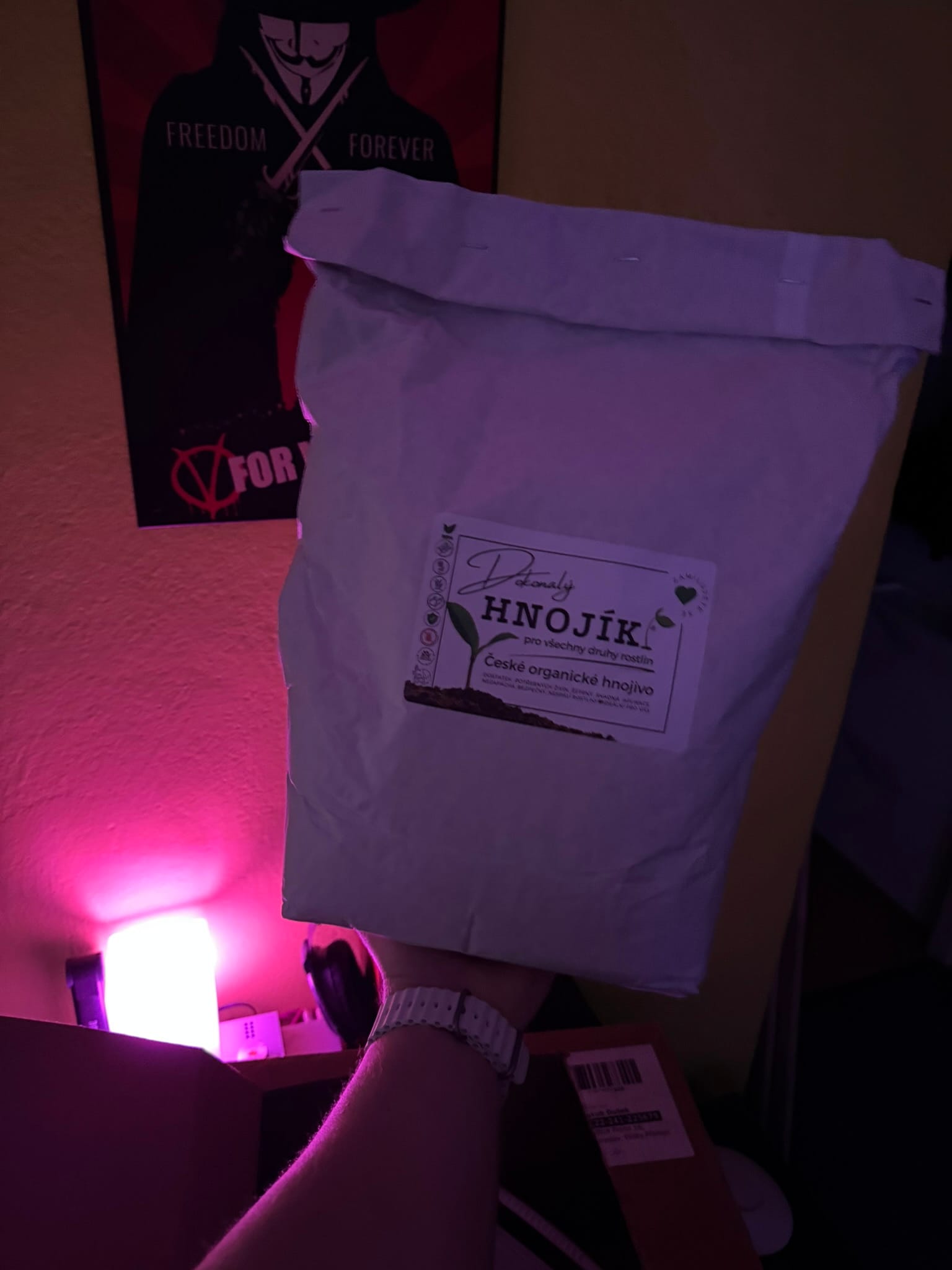

I plan to grow most of my cucumbers outside because, last year, many flowers fell due to the greenhouse heat. I also hope that by introducing some decorative companion plants, I’ll have better luck attracting pollinators. Growing cucumbers in containers should also reduce the chance of transmitting diseases from the soil.
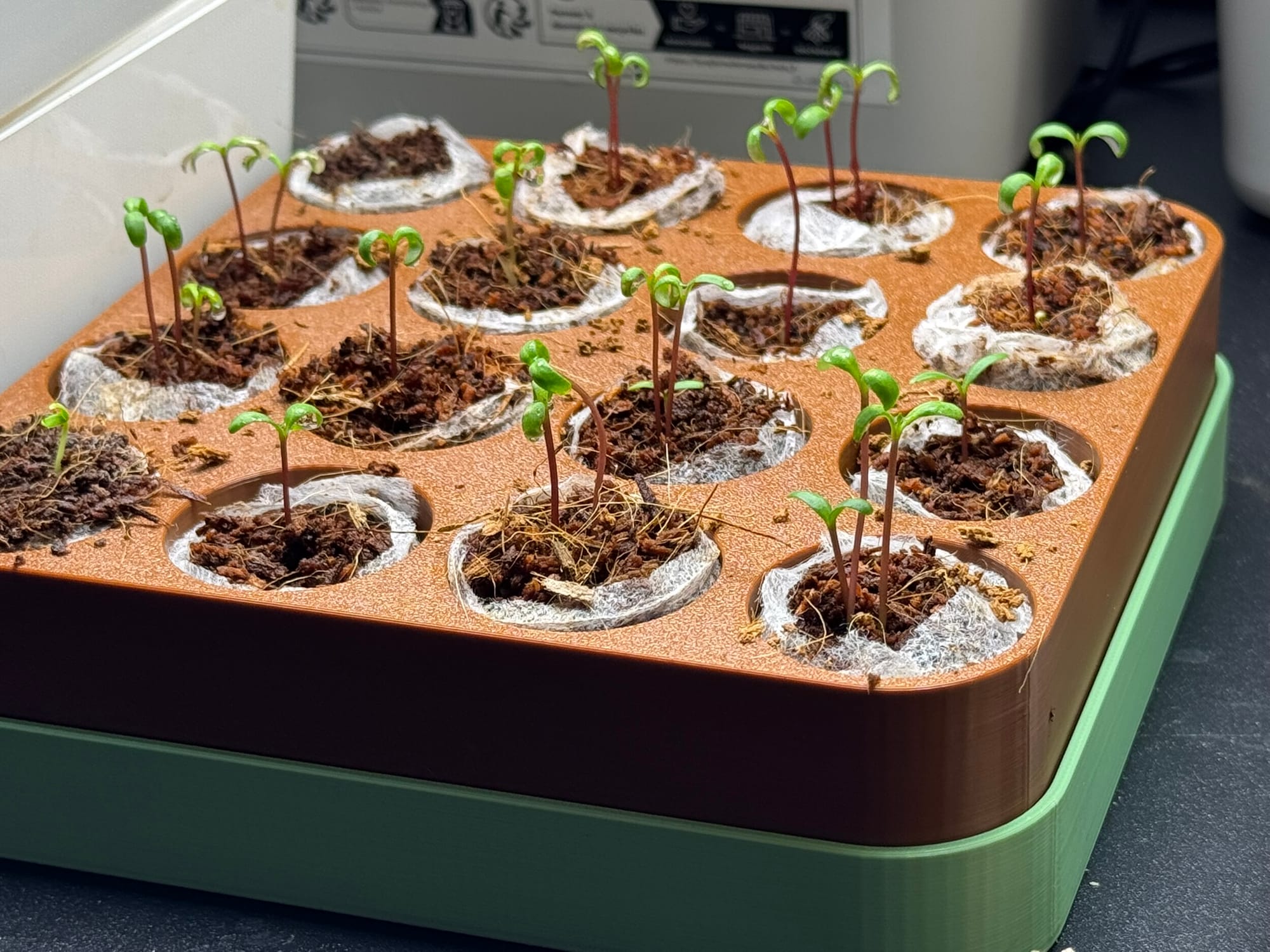
As for tomatoes, I still have no idea what varieties I’ll grow. Last year, I had plenty of plants, but half were susceptible to rot. This year, I’m only growing plants with some level of resistance. In theory, this should result in more tomatoes without increasing the number of pots… but let’s be real, I’ll probably fail miserably and end up with more pots anyway. Why do I even bother, right?
One thing I will grow more of—at least double—is potatoes. I made some mistakes last year that I want to fix, and hopefully, I’ll have a better yield and actually be able to store some. I got the same variety of early spring potatoes, and if the weather cooperates, I’ll plant them in March.
During my season preparations, I finally redesigned my seed starter trays, made them parametric, and implemented some quality-of-life improvements based on issues I had with the previous version. The two main problems were the lack of headspace and poor water retention. I improved the first by making the lid taller and the second by creating dents in the base as legs, raising it slightly. I published the updated version to my Printables profile if you want to create your own.
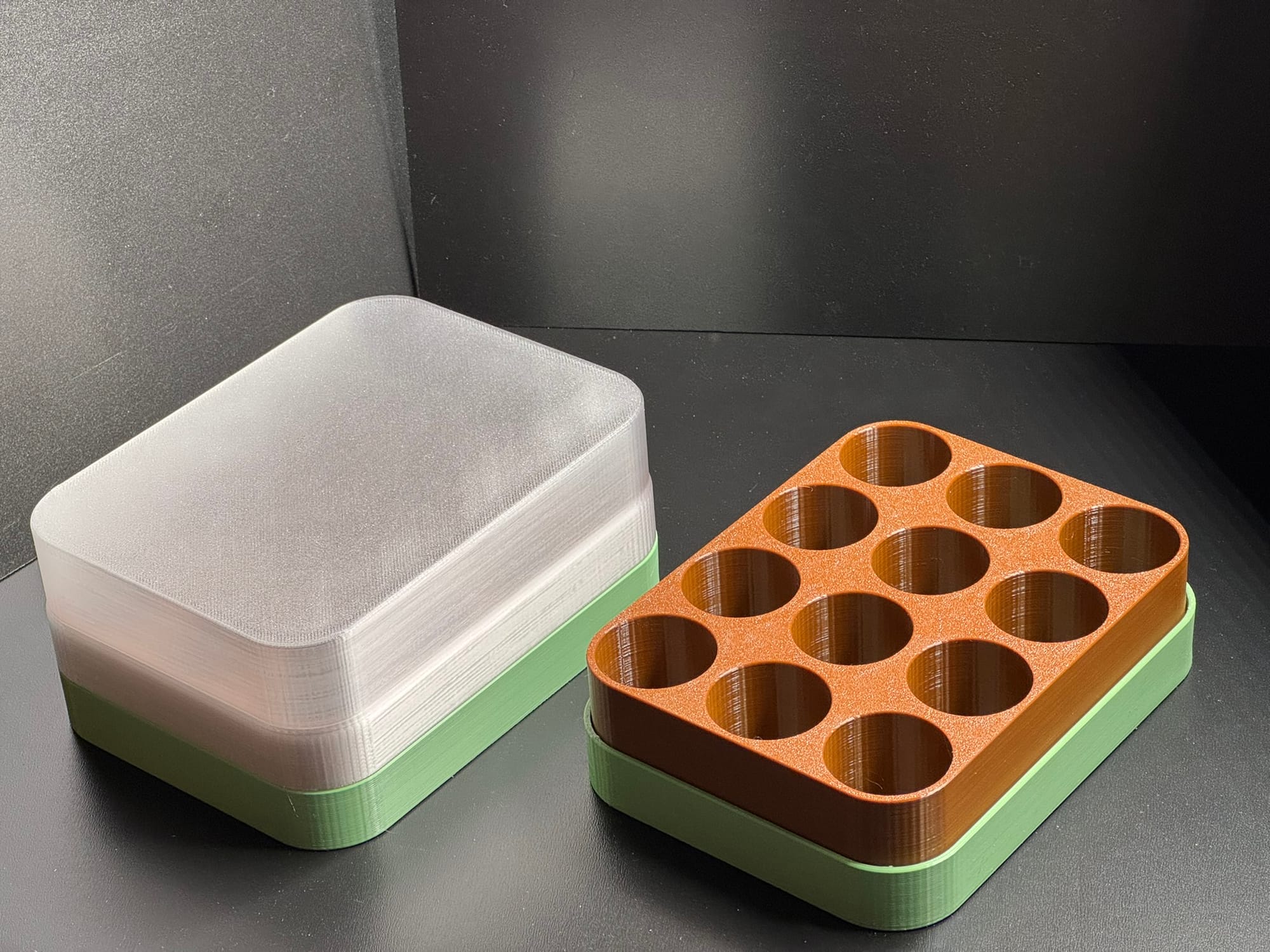
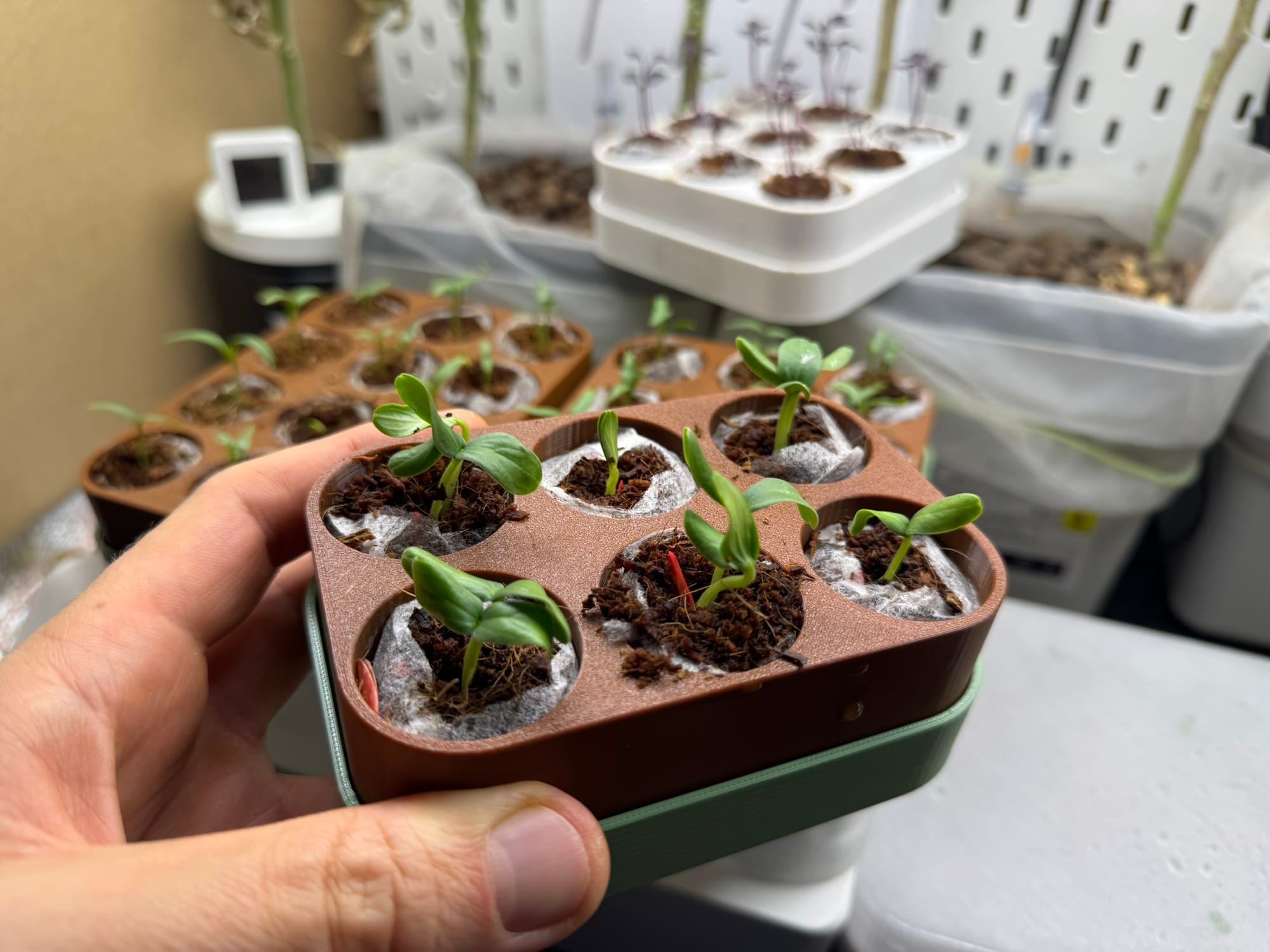
And with that, it’s a wrap for now!
Finally, the winter slumber is over, and it’s time for some toxic positivity for once! My favorite seven months are here, and I hope this year I’ll finally be able to harvest some cherries—unlike last year. But the chances of late frost episodes are increasing every year.
Let’s hope for the best!




Member discussion